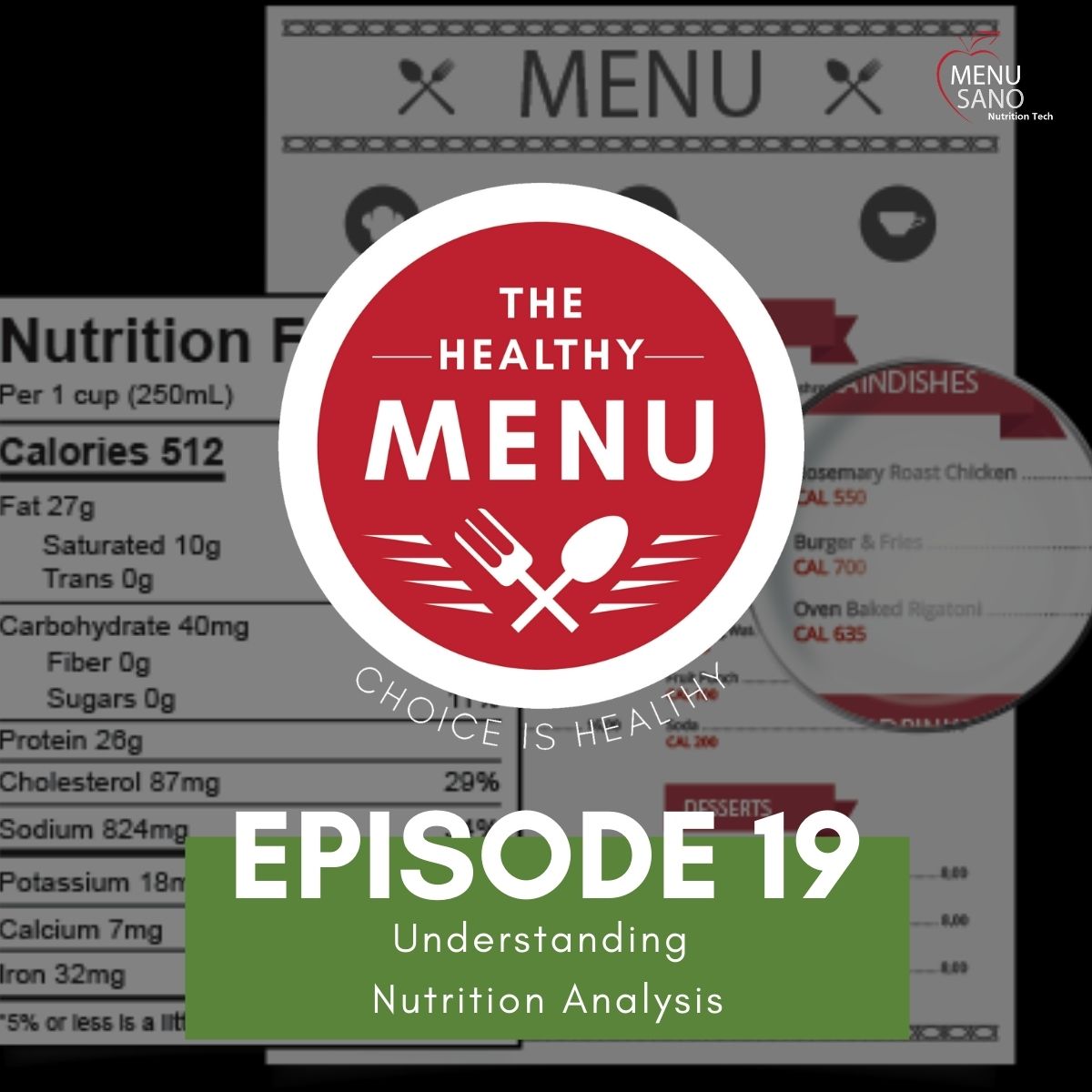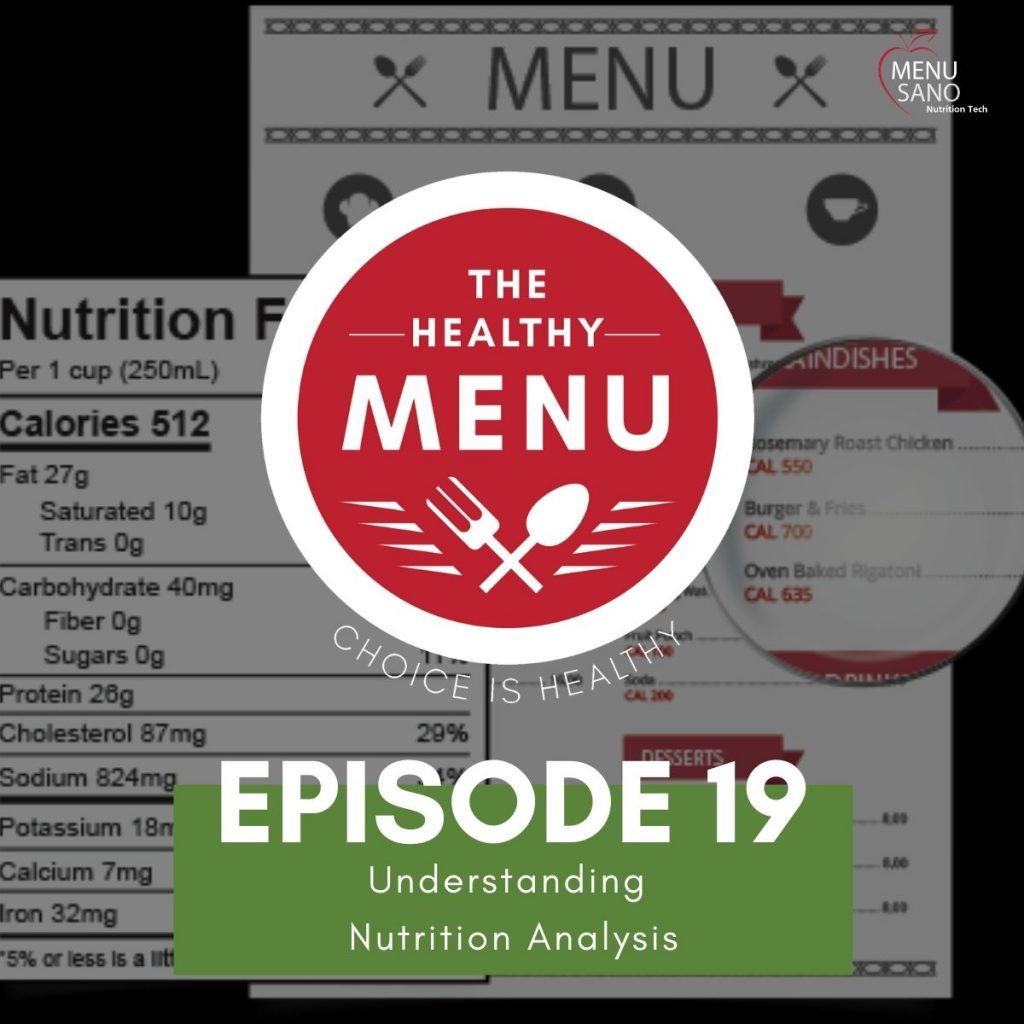 This Bitesize episode discusses Nutrition Analysis, how to understand it better, and why it’s so important, especially for foodservice and hospitality businesses and restaurants.
This Bitesize episode discusses Nutrition Analysis, how to understand it better, and why it’s so important, especially for foodservice and hospitality businesses and restaurants.
This recording was based on a recent post published on the MenuSano blog.
The Healthy Menu Podcast – Episode 19 Bitesize: Understanding Nutrition Analysis
Light Transcript of the Podcast
Nutrition Analysis is an integral part of any foodservice, hospitality, or restaurant business. At the end of the day, it’s down to the consumer who eats the food that you make. The people who buy from your businesses have goals, diets, budgets, and ideas on what is suitable for their consumption.
The way you present the nutritional information of your meal is going to determine if the customer is a right fit for you or not.
Fundamentally, nutritional analysis is based around calories. A single calorie is how much energy it would take to heat a kilogram of water at sea level at the temperature of 1-degree celsius. What you want is to be able to look at a food menu you have created and figure out how many calories and nutrients have been collectively stored in the dish.
In addition to calories, a nutrition label also looks at three other main nutrients; fats, carbohydrates, and proteins. Typically, nutritional analysis is displayed in a table form to make it easy to read. So, for example, in Canada, the nutritional information displayed includes 13 key elements including energy (which are measured in calories), macronutrients, and micronutrients.
You can find more information about the Canadian nutrition label in detail on the Canadian Government’s website, where a detailed, interactive nutrition label is provided.
Whilst it’s not absolutely necessary for all food businesses to provide nutritional information, it’s best to be aware that most consumers find that omitting the information on a menu for example, is problematic and may lead to distrust or people opting not to buy your product.
Here’s a helpful guide to see how the law affects your business:
- Most prepackaged foods require nutritional information to be displayed in the form of a nutrition facts table.
- You don’t need to carry nutrition information if you are a butcher or grocery selling ingredients such as fresh vegetables and fruit, raw meat and poultry (except when it’s ground), and raw seafood.
- If you produce servings of food that are processed or prepared in-store made from its ingredients, such as salads in a deli or cakes in a bakery; then you don’t need to provide nutritional information by law.
- Individual servings of food meant to be consumed immediately and one-bite confections are also exempted from displaying nutrition facts information.
- You also don’t need to provide nutritional information if you are making food for craft shows, flea markets, fairs, and stalls, roadside stands, etc.
- Restaurants and foodservice businesses also do not need to provide a nutrition facts table with their products. Though keep in mind, including nutritional analysis is a proven sales boost and can help keep your customers engaged with your products.
In Canada, if you want to make a claim about your food to further boost sales of your healthy food, such as low in fat or a source of fiber, then check out the guidelines for making those claims in more detail in this Canadian Food Inspection Agency article.



















